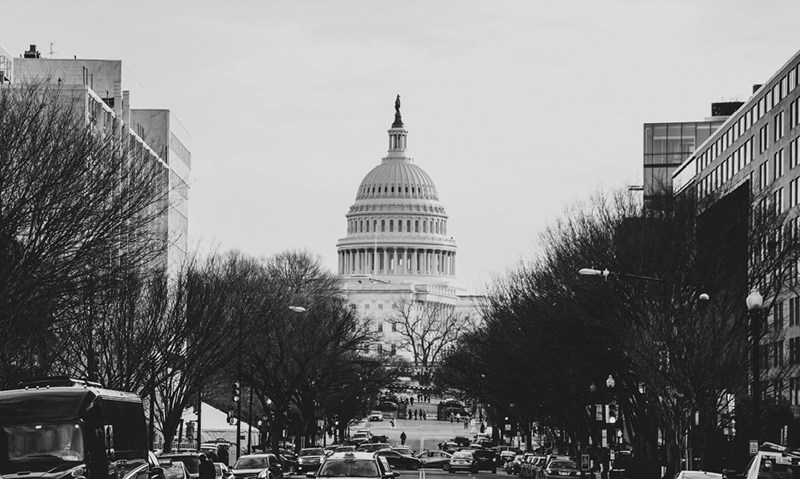


By Mark Tapscott
Buried on page 305 of the $1.9 Trillion “American Rescue Plan Act of 2021” is a provision that awards federal employees with kids as much as $21,000 for each household to stay home.
The “Emergency Federal Employee Leave Fund” provision includes $570 million for government workers who remain home to care for children because their schools have not resumed in-class instruction.
No similar specific provision is included in the bill for the millions of private sector workers whose children are unable to return to their public schools.
The additional funding for paid leave is available to the federal workers “if the school or place of care of the son or daughter has been closed, if the school of such son or daughter requires or makes optional a virtual learning instruction model or requires or makes optional a hybrid of in-person and virtual learning instruction models, or the child-care provider of such son or daughter is unavailable, due to Covid-19 precautions,” according to the bill text.
The special paid leave for federal workers is available through September 30 and is capped at $21,000 per household. It was first reported by Adam Andrezejewski, President of Open The Books, a non-profit foundation that tracks federal spending.
“It’s a personal bailout for federal employees and helps to take the pressure off teachers unions who have resisted reopening the schools to full-time education,” Andrezejewski told The Epoch Times on Feb. 24.
“If federal employees in the D.C. area are being compensated with lucrative paid time off when the schools are remote or even hybrid, there’s a lot less parent pressure for full-time, classroom education. Our kids are the biggest losers here,” he said.
House Majority Leader Steny Hoyer (D-Md.) said on Feb. 23 the House of Representatives will vote on the bill on Feb. 26. Democrats have a slim 221-211 vote majority in the House after losing 13 seats in the November 2020 congressional elections.
Senate Majority Leader Chuck Schumer (D-N.Y.) has promised to move the bill through the Senate as quickly as possible once it is approved by the House.
Schumer’s majority depends upon Vice-President Kamala Harris (D-CA) being present to break ties in the Senate that is split 50-50 between the two parties.
If the proposal makes it to President Joe Biden’s desk, he will sign it, bringing the total spending by the federal government since March 2020 when the CCP Virus—also known as the novel coronavirus—to more than $5.7 trillion.
According to an analysis by Citizens Against Government Waste (CAGW), only about 5 percent, or less than $100 billion, of the $1.9 trillion will be spent in 2021. The vast majority of the spending will be done between 2022 and 2028, long after the disease will have been controlled.
An analysis by Andrezejewski’s group said “targeted Covid-19 relief in the bill can generously encompass the $473 billion in payments to individuals, $75 billion in cash for vaccines, $26 billion to restaurants, $15 billion to help fund airline payrolls, and another $7.2 billion in Paycheck Protection Program funding for small businesses.”
But much of the balance of funds covered by the proposal are slated for non-CCP Virus purposes, according to Andrezejewski, who pointed to the following examples:
- $350 billion allocated to bailout the 50 States and the District of Columbia. The allocation, which is based on unemployment rates, effectively subsidizes the programs of Democratic Blue-State governors like California’s Gavin Newsom and New York’s Andrew Cuomo who had the strictest lockdown policies. States like Florida are penalized because they remained open for business and continued to flourish with minimal economic withdrawal.
- $270 million for the National Endowment of the Arts and the Humanities, which had a $253 million budget last year. A 2017 Open The Books analysis found that 80 percent of the agency’s non-profit grant-making flowed to well-heeled organizations with over $1 million in assets.
- $200 million for The Institute of Museum and Library Services, which is so comparatively small that it doesn’t even employ an Inspector General.
- $128.5 billion to fund K-12 public education. The Congressional Budget Office (CBO) determined that most of this money will be distributed to schools in 2022 through 2028.
- $39.5 billion to aid higher education. Previous CCP Virus relief and recovery laws provided more than $35 billion to colleges and universities.
- $86 billion to save nearly 200 pension plans insured by the Pension Benefit Guaranty Corp (PBGC), many of which are co-managed by labor unions that contributed heavily to Biden’s 2020 presidential campaign and to Democratic incumbents in Congress. No reforms in how the funds must be managed are included in the bill.
Andrezejewski added that other provisions of the bill provide $1.5 million earmarked for the Seaway International Bridge connecting New York state with Ontario, Canada, as well as $50 million in family planning services with no exemption for abortions; $110 million for the second phase of the Silicon Valley subway connecting San Francisco and San Jose, and $852 million to support civic volunteering through AmeriCorps.